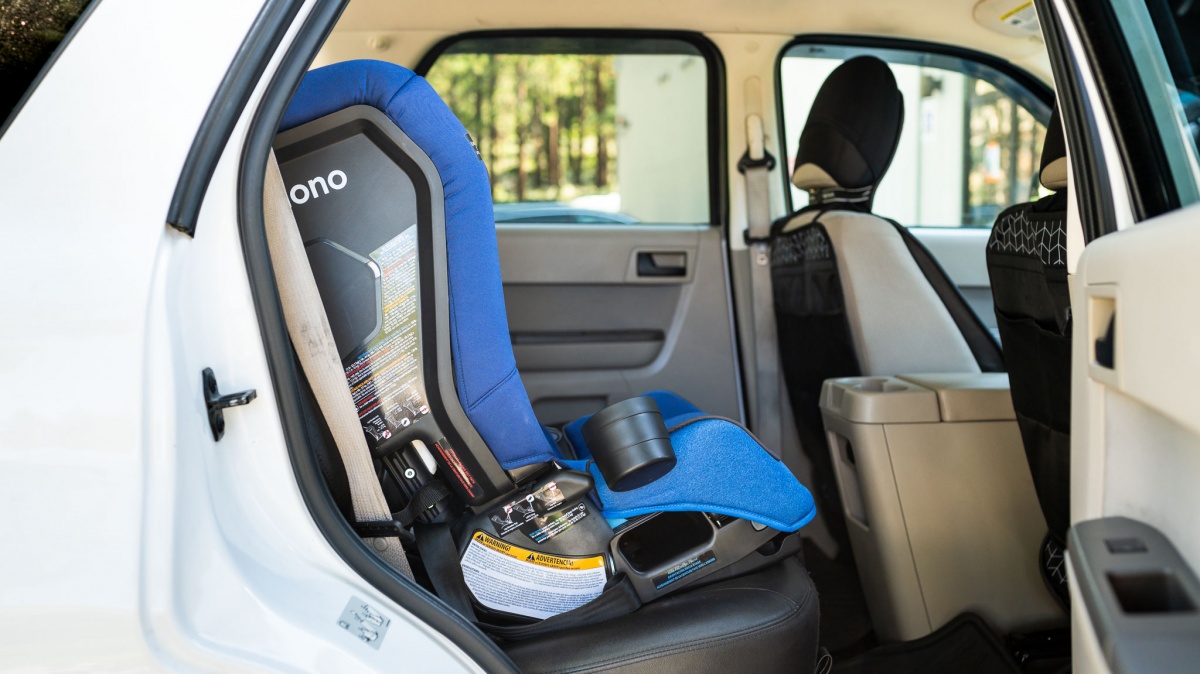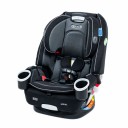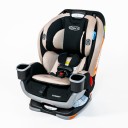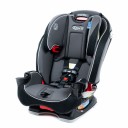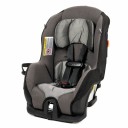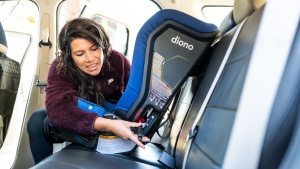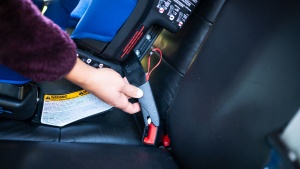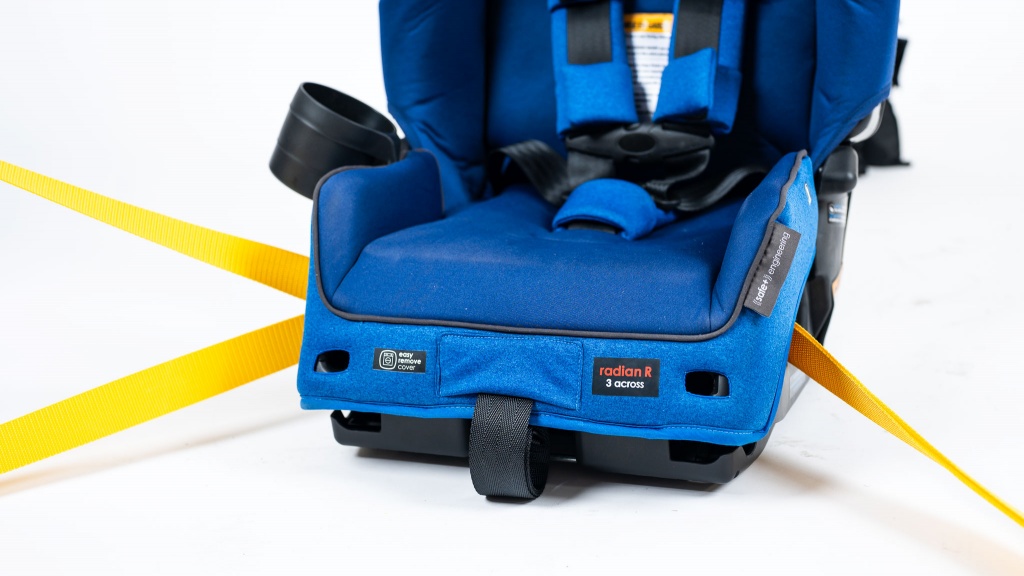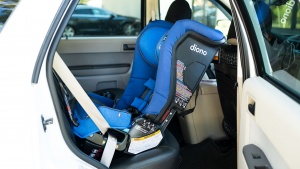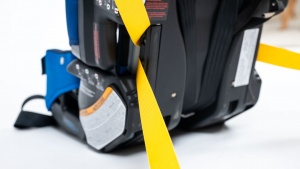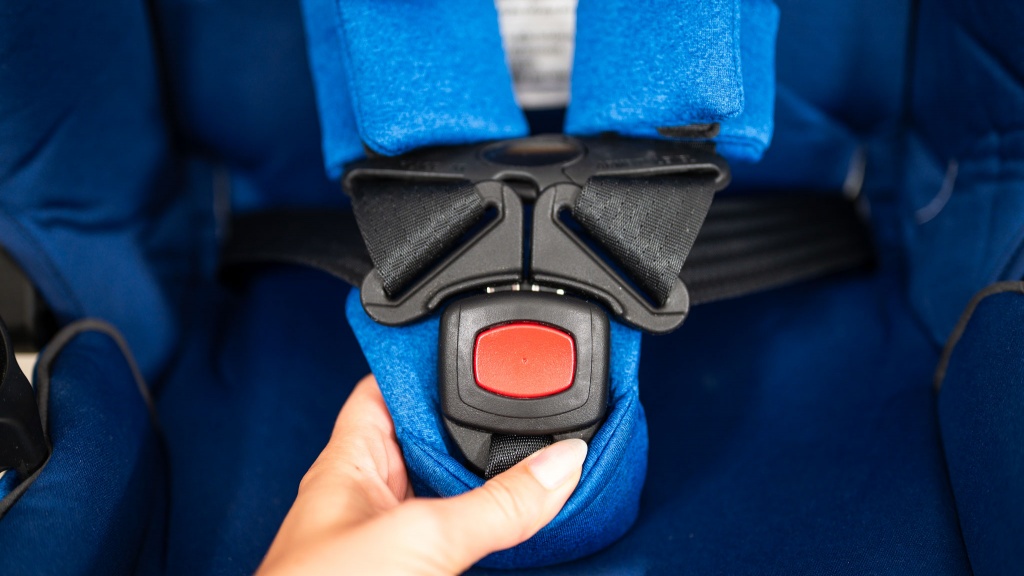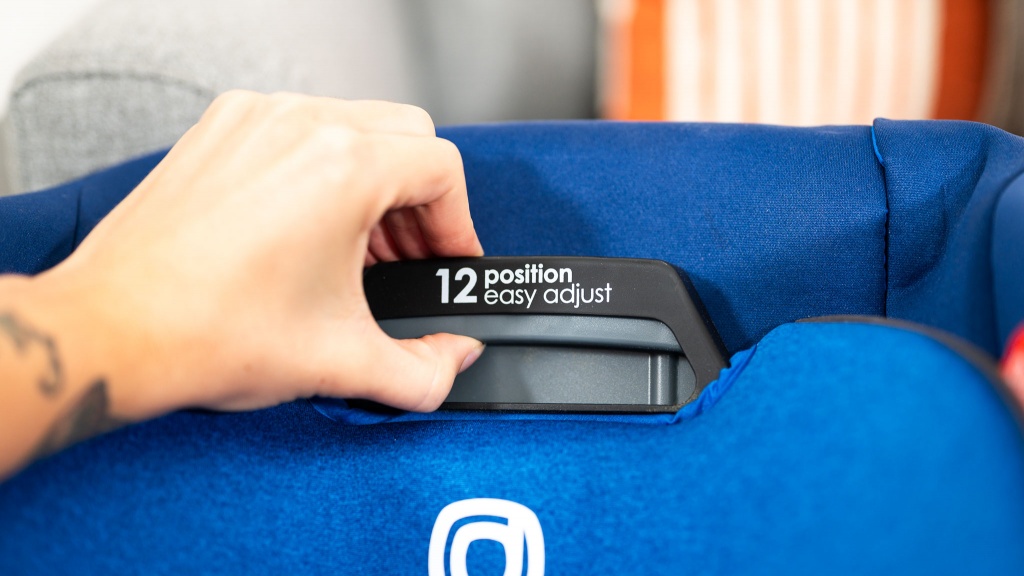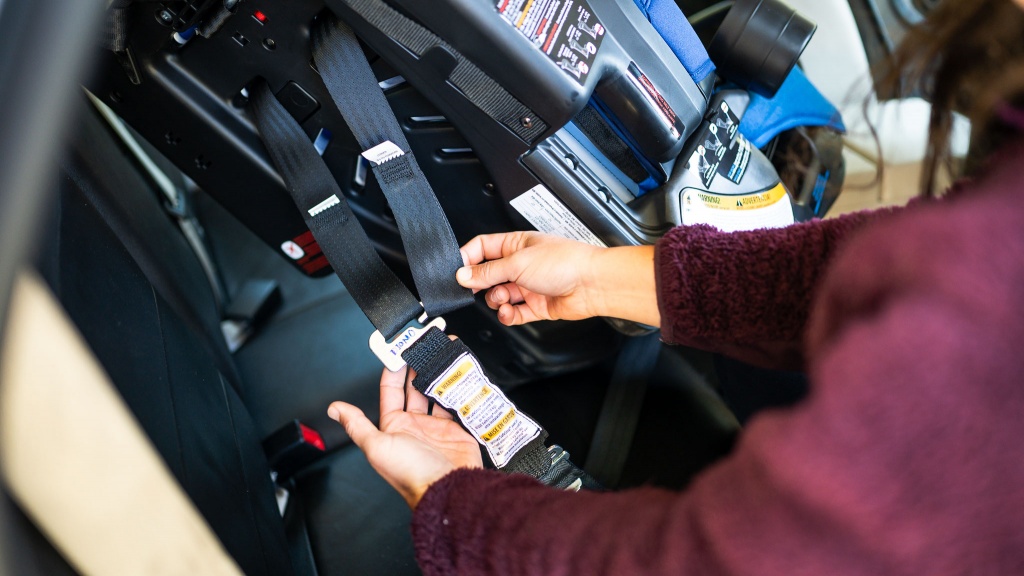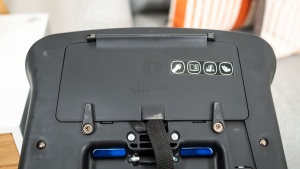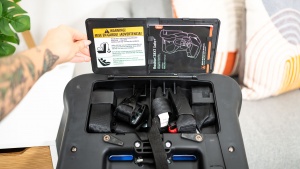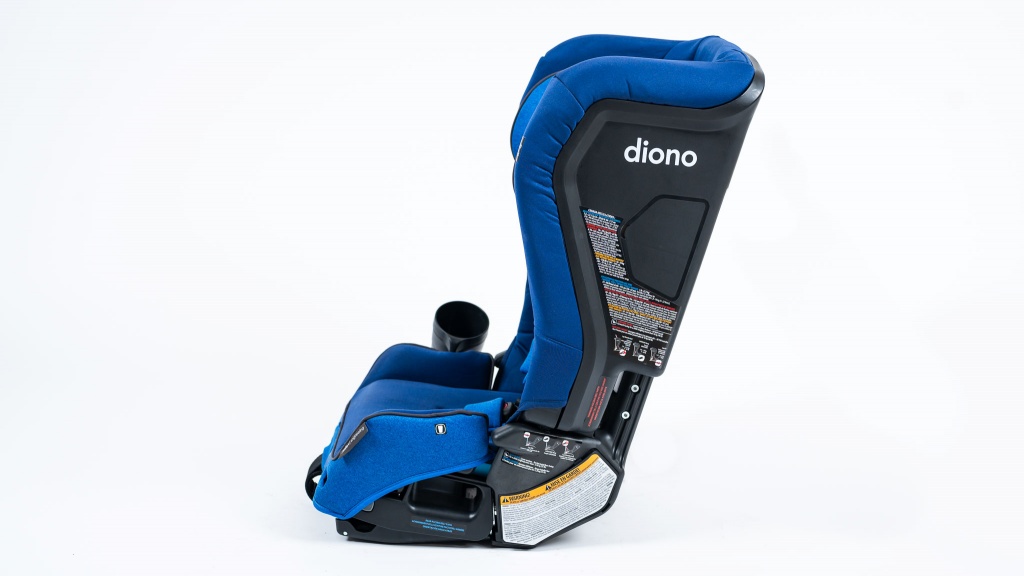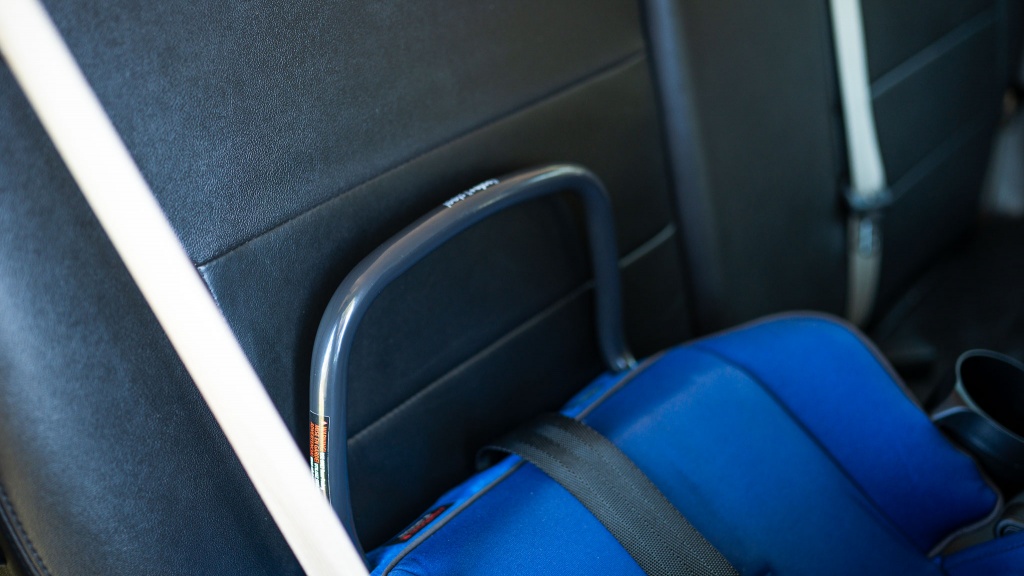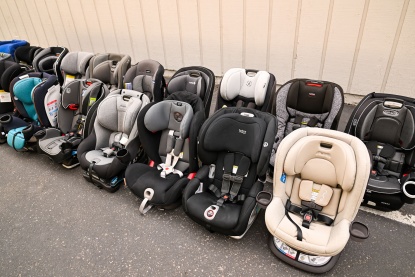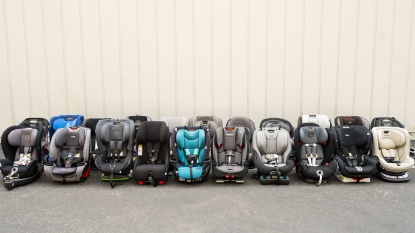Our Verdict
Compare to Similar Products
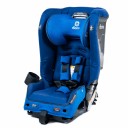 This Product
Diono Radian 3RXT Safe+ | |||||
|---|---|---|---|---|---|
| Awards | Best Overall Convertible and Crash Testing | Best Overall for Rear-Facing Longer | Best Value Convertible Seat | Best on the Tightest Budget | |
| Price | $350 List $239.99 at Amazon | $330 List $329.99 at Amazon | $250 List | $220 List Check Price at Amazon | $80 List $79.99 at Amazon |
Overall Score  |
|||||
| Star Rating | |||||
| Bottom Line | This seat is harder to install and has lower crash test results, creating a seat we don't love | Easy to install and use and one of the best crash test analysis scores make this seat a winner for most families | Better crash test analysis and a lower price make this easy-to-install seat an award contender that just missed the mark | Wallet-loving price on a seat that is easy to install and earned better crash test results than most | Despite a lack of padding and a harder LATCH install, this inexpensive option earned impressive crash test results, making it a winner for budget-limited families |
| Rating Categories | Diono Radian 3RXT S... | Graco 4Ever DLX | Graco Extend2Fit 3... | Graco SlimFit 3-in-1 | Evenflo Tribute 5 |
| Crash Test (35%) | |||||
| Ease of Installation - LATCH (20%) | |||||
| Ease of Installation - Belt (15%) | |||||
| Ease of Use (15%) | |||||
| Comfort/Quality (10%) | |||||
| Weight/ Size (5%) | |||||
| Specs | Diono Radian 3RXT S... | Graco 4Ever DLX | Graco Extend2Fit 3... | Graco SlimFit 3-in-1 | Evenflo Tribute 5 |
| Min/Max Rear Facing Passenger Weight | 4-50 lb | 4-40 lb | 4-50 lb | 5-40 lb | 5-40 lb |
| Min/Max Forward Facing Passenger Weight | 22-65 lb | 22-65 lb | 22-65 lb | 22-65 lb | 22-40 lb |
| Rear Facing Maximum Height | 44 in | Top of head must be at least 1 in below handle | Top of head must be at least 1 in below handle | Top of head must be at least 1 in below handle | 37 in |
| Forward Facing Maximum Height | 57 in | 49 in | 49 in | 49 in | 40 in |
| Weight | 26.5 lb | 21.8 lb | 20.5 lb | 18.5 lb | 9.4 lb |
| Minimum Rear Facing Length | 32 in | 25 in | 26 in | 28 in | 29 in |
| Minimum Seat Width | 17 in | 19 in | 19 in | 19 in | 18 in |
| Number Of Recline positions | 1 | 6 | 6 | 4 | 1 |
| Shoulder Harness Positions | 5 | 10 | 10 | 10 | 4 |
| Crotch Strap Positions | 3 | 2 | 2 | 3 | 2 |
| Anti-rebound Device | Yes | No | Yes | No | No |
| Head Support | Yes | Yes | Yes | Yes | Yes |
| Infant Positioning Insert | Yes | Yes | Yes | Yes | No |
| Harness Type | Rethread | No-rethread | No-rethread | No-rethread | Rethread |
| Onboard Manual Storage | Yes | Yes | Yes | Yes | Yes |
| Rear Facing Level Indicator On Seat | None | Bubble, one side | Bubble, one side | Bead, one side | Line on decal, both sides |
| Booster Mode Available | Yes | Yes | Yes | Yes | No |
| Foam Type | Not mentioned | Not mentioned | Not mentioned | EPS | EPS |
| Seat Lifespan | 10 years | 10 years | 10 years | 10 years | 6 years |
| Aircraft Certified | Yes in harness mode, No in booster mode | Yes in harness mode, No in booster mode | Yes in harness mode, No in booster mode | Yes in harness mode, No in booster mode | Yes |
| Warranty | 1 year limited | 1 year limited | 1 year limited | 1 year limited | 90 day limited |
Our Analysis and Test Results
In Seattle, Washington, in 1999, the Diono company began. In 2002, they won an award for the Diono Mighty-Tite, which inspired the establishment of its Staffordshire, England, location. In 2005, they launched the first steel-reinforced safety seat that folds. Winona Capital invested in Diono in 2015 to help increase its growth and development of innovative options.
Performance Comparison
Crash Test
The Diono earned one of the group's lowest crash test analysis results. While it is a safe seat and meets the federal guidelines, it did not perform well in our hotter crash test with a more modern padded sled. With sensor results that struggle to compare to the other contenders, it is not a standout for crash testing.
The chest and HIC head sensor test results showed higher G-forces recorded than much of the competition, with results that do not impress us.
In these tests, we want the lowest amount of G-forces on the dummy sensors as possible. In this group, the Diono couldn't keep up with the higher-scoring results, and while safe, we think there are better seats to be had in this group based on test results.
Ease of Install - LATCH
If you're looking for a hard-to-install seat, then you've found it, in our opinion. With one of the lowest test results in the group, it is fair to say it's significantly harder to install than most of the competition. The Diono has no level indicator, no lock-off, and flexible strap push-style connectors.
There is a tunnel path under the seat that you need to push one side of the strap and connector through. This lack of visibility makes it hard to know if the strap is twisted or flat. Ours tended to get caught, and while smaller hands can fit through, larger hands cannot. There is a foot you can flip to change the angle, but there is no indicator of which angle to use for what. While it is nice not to have to meet a guideline, it is unsettling not knowing if it is correct. We had difficulty getting the straps tight enough, and parts of the strap rubbed on the side, making it even more awkward. We got it close to passing the wiggle test, but it never succeeded and was one of a handful of seats we wouldn't want to use with our children for this reason. The push connectors have useful red pull webbing for removal.
The forward-facing installation of the Diono includes a smaller hole that will be hard to use with bigger hands. You'll need repeated reference to the manual since the seat has no indicator or information. It is not clear or straightforward. There are different seat-bottom positions for different weight ranges, so you need to be mindful of changes you need to make as your child grows. There is an attachment called “safe stop,” and we worry parents will lose it or forget about it before needing it, making it a poor design for busy parents. We had to use a lot of effort to tighten this seat, including being inside the car with a knee in the seat. After pulling the straps, we were tired and suspect parents wouldn't want to move it once installed. It was more stable in the first test car than the second, and we think it will be very car-dependent.
Ease of Install - Belt
With the lowest score for any seat in any installation method, the Diona was a very frustrating seat to install using the vehicle belt.
The Diona lacks many of the components we think make installation easier. It does not include a level indicator, color coding, or a lock-off. Not having a lock-off or tensioner can make achieving a stable installation that passes the wiggle test difficult. Without a level indicator, you are just guessing, and maybe it doesn't matter, but it feels like it should. Threading the belt is straightforward; you push it down the tube under the seat, and the pathway could pose a problem for larger hands.
We had to shove our hand through to grab the belt from one side to the other, and it could be hard for anyone with larger-than-average hands. The low profile of the seat bottom is helpful for reaching across to buckle the belt. There is no lock-off, so we never felt like it was tight enough, and no matter how much you try, the slack is never really gone. We couldn't get it stable enough to pass the wiggle test, which made it a seat we couldn't recommend to a friend or would feel comfortable putting our child in. Overall, installation isn't hard, but our inability to get it stable enough to use was a disappointment.
Installing the Diono using the belt in the forward-facing position includes assessing our child's size and determining where to place the seat bottom. You can't see this on the diagram, and it can be confusing without the manual's help, so we always remind parents to use the manual during installation. We also can see some parents forgetting to utilize the “safe stop” addition to the harness. Threading the vehicle belt is through the back, and there is no access to help pull the belt across. On the upside, the seat is thin, and there is no material to move or remove; the pathway is small. We tried everything we could during installation to get this seat tight and stable. We had multiple testers work their magic, but without a lock-off, we had little luck. The leather seat on the test car didn't help either, as the seat kept sliding around during our attempts. Overall, we could not install this seat tightly enough to pass the wiggle test and were not comfortable enough with the final installation to use it without our own kids.
Ease of Use
The Diono is relatively easy to use outside of the installation, with a near-average result for the test group.
Harness
The harness buckle on the Diono is better than the average seat. It is smooth to put the prongs inside, and it doesn't require extra effort to push them in place. It has a nice big button, and the prongs pop out when pressed. The chest clip is a simple pinch operation, and it works well.
Tightening and loosening the Diono harness is easy, and everything works smoothly without yanking or complications. The shoulder strap padding is bulky, but it isn't a problem if you move it down somewhat before tightening. The release button is close to the edge, and using our thumbs was easy. It is under some material, but it moves out of the way without a problem for quick access.
The harness height adjustment on the Diono is frustrating and disappointing. It is a rethread style that requires dismantling and moving the straps from one hole to another. It isn't as straightforward as sliding an assembly up and down, and there are only five different height options, making it more challenging to find the right fit. The crotch buckle has three slots, but it is hard to move and requires flipping the seat and performing maneuvers from the underside. A panel partially blocks it, so you need to have small enough hands to jam them inside, and we still were only able to use the tops of our fingers to make the change. Larger hands will be a problem or impossible to fit in the space and make the manipulation.
LATCH Storage
Latch connector storage is also wonky and not our favorite. The cubbie is at the top, and we had to fight the seat while using it to prevent it from falling over. We also had trouble shoving the webbing into the cubbie, and it felt like there wasn't enough room without prior prep to ensure it all fit.
Cover
Taking the cover off for cleaning was ridiculously harder than most, and we had to use a pen to help us reach the pull tab you need to undo to remove the cover. It took time and was a pain compared to others that were removed quickly and easily without the help of tools. You must rethread the harness each time you take it off and put it back on.
Comfort/Quality
The Diono is neither comfy nor very high quality compared to the other seats. When viewed side-by-side, it is easy to see why it pales compared to the competition.
The headrest material is cooling and is relatively nice. The other blue parts are a different fabric that doesn't feel as smooth or cooling. It is a bit rough and not smooth, and we wish the headrest material were everywhere. The infant insert isn't much better, and while it was irritating our faces during testing, it is only okay and nothing to get excited about. We'd want something softer for a newborn.
The infant stage padding can be broken down into three components, with a triangular black and a base that is removable for older babies, so you can use just the infant insert before finishing with just the seat padding. The padding is about average for thickness and density. We'd like to see more for infants but don't recommend using a convertible seat with infants anyway.
The main seat has minimal side padding and a dual layer on the back portion. The bottom of the seat has compact memory foam-style padding suitable for older passengers. Overall, the padding is average and could be thicker or more lush.
The shell has fewer components than much of the competition, so there are fewer places for messes to accumulate. However, below at the base and back there are small crevices where two components meet. There is one cup holder that can be placed on either side, and it has adjustable spacing from the main body seat with about an inch and a half of space to help little ones potentially reach the holder.
Weight/Size
The Diono is traditionally known for being narrow, with marketing geared toward those who need to fit three seats in one vehicle row. In our tests, the Diono measured 17.2 in at its widest point, making it one of the most narrow in the group behind the Clek seats with a low of 16.9 in. While we see why this might be intriguing, the lower crash test analysis result has us feeling you'd be better off looking elsewhere for a narrow seat.
It also folds, which is something some parents find intriguing for travel. However, at a weight of 26.5 lbs, it isn't the highest in the group, and we suspect most parents would not want to carry it through an airport. The average weight for this group is 24.3 lbs, with the lightest being somewhat over 9 lbs.
Should You Buy the Diono Radian 3RXT Safe+?
The short answer is no, we don't think you should buy the 3RXT. This seat did not perform well compared to the competition and earned one of the lowest overall scores in the group. While the folding feature and narrow design might be appealing on first blush, the crash test analysis results and the ridiculously difficult time we had during installation make this a seat we'd avoid.
What Other Convertible Car Seat Should You Consider?
If you need a lightweight or narrow seat, something good for travel, the Evenflo Tribute 5 is one to consider. With a low price and one of the group's best crash test analysis scores, this seat is uber-light and narrower than most. If you want the best seat in the lineup, the Graco 4Ever DLX earned almost double the crash test score, is easier to install and has a lower price. In truth, almost any seat in the lineup would best the Diono.


